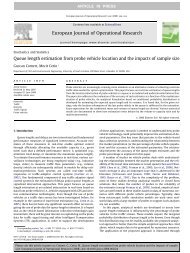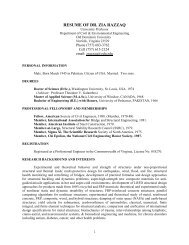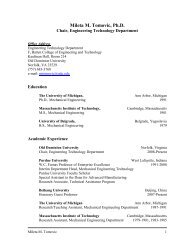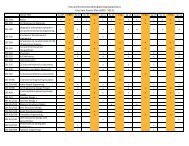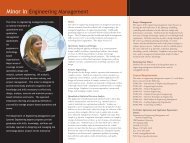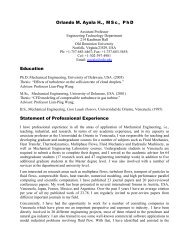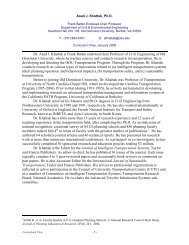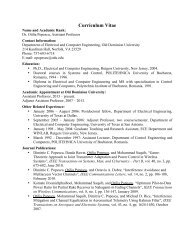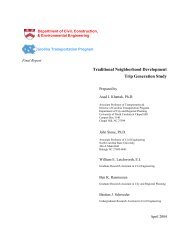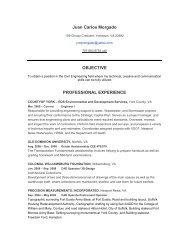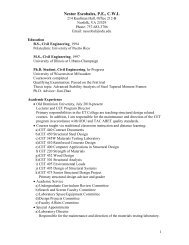storm water management model, version 4: user's manual
storm water management model, version 4: user's manual
storm water management model, version 4: user's manual
Create successful ePaper yourself
Turn your PDF publications into a flip-book with our unique Google optimized e-Paper software.
Figures (continued)II-1. Sinusoidal interpolation of hourly temperatures ............................................................. 353II-2. Typical gage catch deficiency correction ........................................................................ 357II-3. Subcatchment schematization with and without snowmelt simulation........................... 359II-4. Redistribution of snow during continuous simulation .................................................... 361II-5. Seasonal variation of melt coefficients ........................................................................... 367II-6. Typical areal depletion curve for natural area................................................................. 371II-7. Effect on snow cover on areal depletion curves.............................................................. 372II-8. Schematic of liquid <strong>water</strong> routing through snow pack.................................................... 375IV-1. Flows into, through, and out of a storage/treatment unit................................................. 388IV-2. Time varying inflow and outflow rates for a reservoir.................................................... 389IV-3. Well-mixed, variable-volume reservoir .......................................................................... 393IV-4. Reduction in volatile solids in raw sludge ...................................................................... 398IV-5. Camp’s sediment trap efficiency curves.......................................................................... 403IV-6. Limiting cases in sediment trap efficiency...................................................................... 404V-1. Horton infiltration curve and typical hyetograph ............................................................ 410V-2. Cumulative infiltration, F, is the integral of f, i.e., the area under the curve .................. 410V-3. Regeneration (recovery) of infiltration capacity during dry time steps........................... 413V-4. Subcatchment schematization for overland flow calculations ........................................ 419V-5. Non-linear reservoir <strong>model</strong> of subcatchment .................................................................. 420V-6. Depth parameters for trapezoidal channel and circular pipe........................................... 423V-7. Richardson extrapolation as used in the runoff block..................................................... 425VI-1. Shield’s diagram for definition of incipient motion ....................................................... 420VI-2. Linear and parabolic approximation of Shield’s diagram ............................................... 431VI-3. Particle size distribution for a pollutant .......................................................................... 434VI-4. Truncation of particle size distribution during scour and deposition.............................. 435VII-1. Flow and quality data for Seattle, Washington, View Ridge I catchment.............................VII-2. Flow and quality data for Seattle, Washington, South Seattle catchment.............................VII-3. Flow and quality data for Seattle, Washington, Southcenter catchment...............................VII-4. BOD load vs. flow.................................................................................................................VII-5. TSS load vs. flow ..................................................................................................................VII-6. NO 2 -N + NO 3 -N load vs. flow ..............................................................................................VII-7. Log 10 BOD load vs. log 10 flow..............................................................................................VII-8. Log 10 TSS load vs. log 10 flow ...............................................................................................VII-9. Log 10 NO 2 -N + NO 3 -N load vs. log 10 flow............................................................................VII-10.Log 10 load vs. log 10 flow for all events..................................................................................VII-11.Log 10 load vs. log 10 runoff for all events BOD, TSS and NO 2 -N + NO 3 -N..........................VII-12.Log 10 load/area vs. log 10 runoff for all events BOD, TSS, and NO 2 -N + NO 3 -N .................VII-13.Flow and quality data for Stevens Avenue catchment ..........................................................xviii



